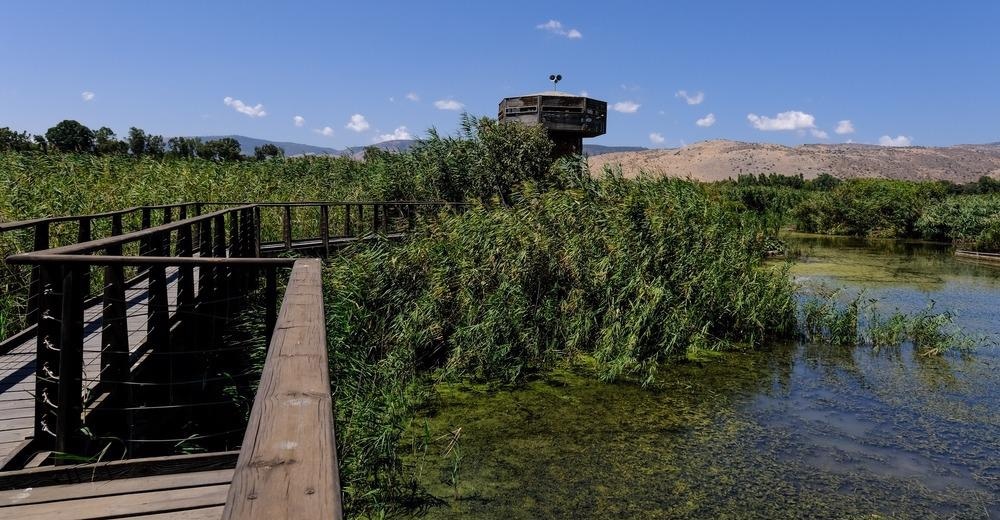A paper exploring the use of manufactured wetlands, a key phytoremediation technology to provide passive and minimally invasive water treatment, has been published in the journal Sustainability.

Study: Manufactured and Floating Wetlands for Sustainable Water Reclamation. Image Credit: MoLarjung/Shutterstock.com
Access to safe and hygienic water supplies for drinking and hygiene is a critical concern for developing nations. Aside from conventional remediation and treatment strategies, phytoremediation has demonstrated its potential as an environmentally friendly alternative.
Phytoremediation and Manufactured Wetlands
Phytoremediation is the use of plants to reclaim wastewater. This ecotechnology uses engineered solutions including manufactured wetlands and variants thereof. These variants include floating treatment wetlands. The origins of the field lie in 19th century Germany when Rieselfeld (sewage trickle fields) were introduced by social reformers in the final decade of the century. In this technology, wastewater is passed over beds of gravel or water-permeable soil where it is cleaned by the microflora present in the beds.
In the 1950s, hybrid systems which included vegetation in the filtering beds were developed by German limnologist Dr. Käthe Seidel, enhancing the speed of municipal wastewater treatment.
Vertical and horizontal seepage beds using gravel as a substrate and marsh plants make up these hybrid systems. Thus, the concept of the manufactured wetland was introduced, where contaminants are removed by the synergistic interaction between the substrate, microflora, and vegetation.
Initial use of these artificial wetland technologies concentrated on domestic and municipal wastewater treatment and remediation, but recently the use of phytoremediation techniques has expanded to include stormwater, polluted river water, industrial and mine wastewater, and landfill runoff and leaching.
The Study
The study published in the journal Sustainability provides a review of current literature and research perspectives on the use of manufactured wetland technologies for the treatment of a diverse range of wastewaters. Three reviews and six research articles have been included by the authors and cover wastewater origins such as the textile industry, swine breeding farms, agriculture, and hydrocarbons.
Swine Wastewater
Wastewater from swine farms has a complex composition, including fecal matter, urine, undigested food remnants, pathogens, and pharmaceuticals such as antibiotics. Nutrient contents and chemical oxygen demand is high in these types of wastewaters. If untreated, wastewater from these sources can cause huge environmental damage and negatively impact the biotic components of ecosystems.
A recent study by Denisi et al. has demonstrated the use of aerated and non-aerated lagoons in conjunction with manufactured wetlands in a pilot scheme; ~99% of organic matter and suspended solids were attenuated by the system, with 80-95% total nitrogen removal.
Agricultural Wastewater
Agriculture relies heavily on agrochemical products such as pesticides, fertilizers, and hormones to improve yields and resistance to pathogens and climate change, leading to wastewater containing substantial amounts of environmental contaminants.
Tang et al. have highlighted the use of manufactured wetlands for the removal of nutrients, suspended soils, pathogens, toxic metals, and other harmful pollutants from agricultural wastewater, providing an innovative solution to mitigate the agricultural sector’s negative environmental impact.
Textile Wastewater
Self-buoyant hydroponic root mats have recently received significant attention for wastewater reclamation in open systems. Microbial enrichment along with appropriate macrophyte choice can enhance their performance. Nawaz et al. have reported the efficient removal of pollutants from textile wastewater via the bioaugmentation of pollutant-degrading and plant-growth-promoting bacteria.
Further Reading: Using Gold Catalysts for Industrial Hydrogenation Processes
The study by Nawaz et al. reported that the proliferation of endophytic and rhizospheric bacteria reduced toxic metals, biochemical oxygen demand, total dissolved solids, and so forth, from polluted textile wastewater.
Hydrocarbons Removal
The review study highlighted research by Fahid et al. into the removal of hydrocarbon-contaminated water. It was reported that the synergism of hydrocarbon-degrading bacteria and plants in floating treatment wetlands can improve the removal of diesel fuel from contaminated water.
Other studies focused on the removal of sodium decyl sulfate, a common surfactant in detergents, and acetaminophen, which is commonly found in sewage treatment influents and effluents. The selected papers in the current review study demonstrate the potential for contaminant removal by manufactured wetlands in a variety of environmental settings.
Future Opportunities and Perspectives
Future opportunities for the technology were presented in the review study. Understanding the variety and working principles of different wetlands is crucial for the optimization of the technology for different wastewaters. The authors have stated that the research highlighted in the study provides opportunities for improving the cost-effective treatment of wastewater and meet their discharge standards for governmental bodies and industry.
Additionally, aside from mitigating environmental damage, the effective use of manufactured wetlands could help to remove toxic pollutants from the food chain. Moreover, the technology can promote sustainability by providing biomass for energy sources, reducing the reliance on fossil fuels, and reducing the number of trees felled to meet the energy needs of vulnerable communities.
Finally, the authors have stated that manufactured wetland technology can directly benefit the public, farmers, industry, exporters, traders, and commercial enterprises.
Further Reading
Arslan, M, Afzal, M & Anjum, N.A. (2022) Manufactured and Floating Wetlands for Sustainable Water Reclamation [online] Sustainability 14(3) 1268 | mdpi.com. Available at: https://www.mdpi.com/2071-1050/14/3/1268
Disclaimer: The views expressed here are those of the author expressed in their private capacity and do not necessarily represent the views of AZoM.com Limited T/A AZoNetwork the owner and operator of this website. This disclaimer forms part of the Terms and conditions of use of this website.